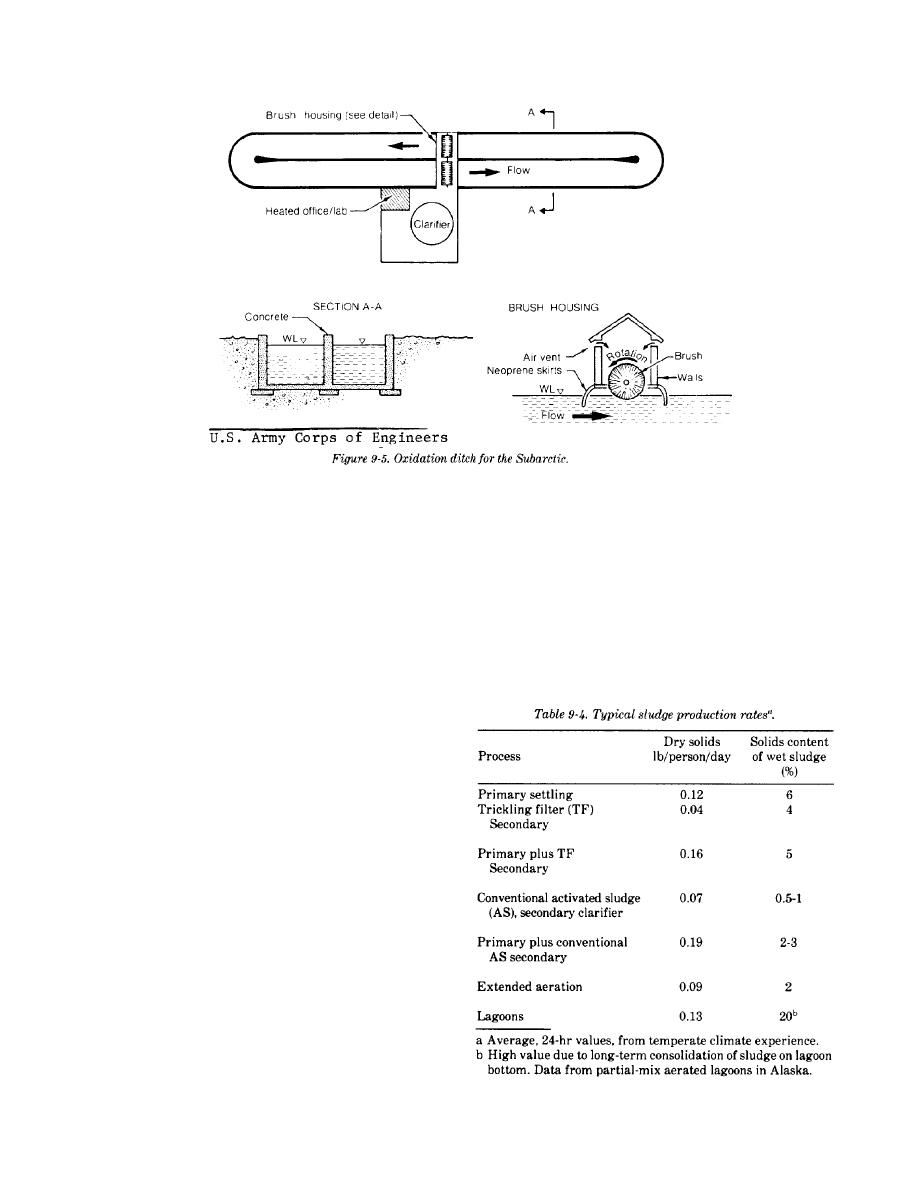
TM 5-852-5/AFR 88-19, Volume 5
(4) Attached growth systems. These include
ms = proportionality coefficient for sludge, use
trickling filters, rotating biological discs, and other
0.6 for sludge concentrations in range 0-
devices with plastic, rock or wooden media. Effec-
7 percent solids (higher concentrations
are difficult to spread on bed), in (EFd)-
tive treatment depends on maintaining a thin film of
IA = Air freezing (or thawing) index, EFd
liquid over the media. These units are susceptible to
freezing and must therefore be enclosed in a pro-
(use warmest winter of record for
tective structure. Criteria from TM 5-814-3/AFM
freezing calculations)
88-11, Vol.3, will be used for design, along with the
temperature coefficients given in table 9-3. The need
(1) Sludges with an undrainable jelly-like
for additional heat in the protective structure will
consistency will dewater immediately upon thawing
depend on the temperature of incoming waste-water
and then have a granular consistency.
and on the degree of treatment required.
9-5. Sludge management.
Large-scale, conventional treatment facilities and
those operating in a heated environment can be
expected to produce sludge at rates similar to those
of conventional temperate zone practice. Typical
values for systems in use in the cold regions are
presented in table 9-4. Thickening, digestion, and
dewatering of sludge all follow temperate zone
practice as defined in TM 5-814-3/AFM 88-11,
Vol.3.
a. Freeze-thaw dewatering. Sludges from water
or waste water treatment operations can be flooded
onto conventional open sand drying beds in layers
and allowed to freeze. The depth of sludge that can
be frozen (or thawed) is calculated with:
X = ms (IA)
(eq 9-6)
where:
X = depth of sludge that can be frozen, inches
9-8



 Previous Page
Previous Page
